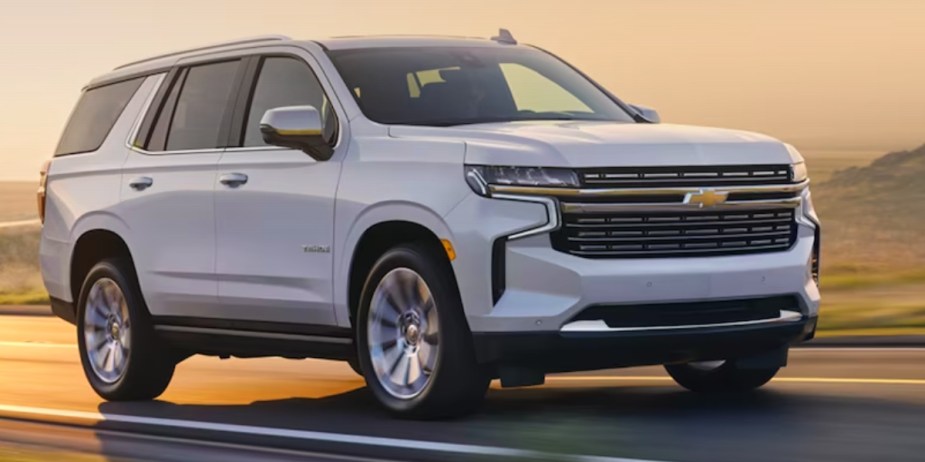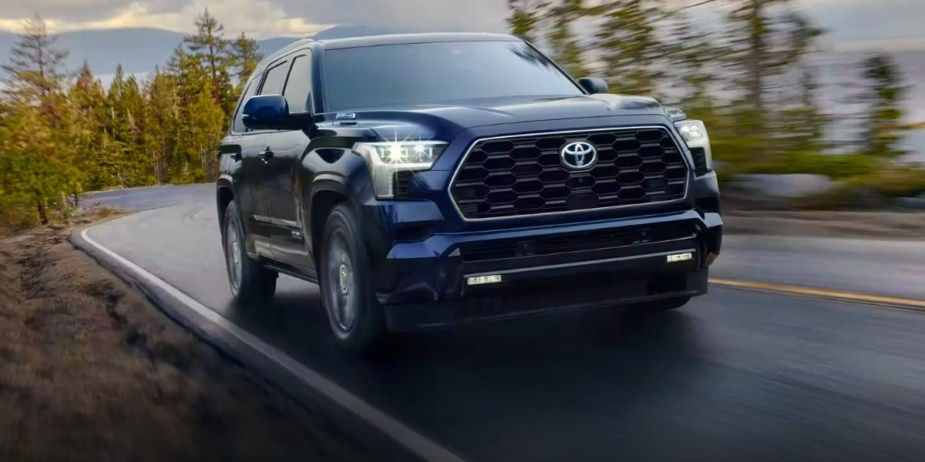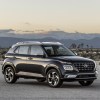
Are Large SUVs Becoming Outdated/Irrelevant?
Large SUVs aren’t as popular as they were just a few decades ago. Full-size SUV models are no longer quite as relevant to the industry for several reasons. Some large SUVs still sell well. Here are some reasons why many consumers are opting for alternatives.
Why aren’t large SUVs more popular?

There are several contributing factors to the decline in full-size SUV sales over the last few decades, but one reason stands out. A huge part of why drivers aren’t getting as many large SUVs is because there are more affordable options on the market.
Today, there are midsize three-row SUVs available that offer nearly as much cabin space as a significantly more expensive full-size SUV. Automakers are making more of these midsize three-row SUVs because of their popularity. Which model started the trend?
Kia’s Telluride midsize three-row SUV hit the scene in Spring 2019. In just a few years, it has easily become one of the most dominant midsize SUVs on the market. Its South Korean cousin, the Hyundai Palisade, also gets plenty of attention.
Brands like Toyota and Mazda are producing new midsize three-row SUVs to compete with Hyundai and Kia’s popular models. Midsize three-row SUVs offer many of the same benefits as large family SUVs at a fraction of the price.
Since smaller models have nearly as many seats (or, in some cases, just as many) as full-size SUVs, many consumers prefer the more affordable alternatives. Automaker’s midsize offerings also tend to be more efficient than large, thirsty models. Better fuel economy often means a lower cost of ownership.
What are the best full-size SUVs?

Some of the best large family SUVs on the market are from American brands. Chevy makes two popular full-size SUVs that dominate ranking lists.
The Chevrolet Tahoe and Chevrolet Suburban are two of the best large family SUVs money can buy. Furthermore, the Tahoe starts at $54,200 and uses a 5.3-liter V8 engine to make 355 horsepower and 383 lb-ft of torque. Chevy’s full-size model achieves up to 21 miles per gallon in the city and 28 miles per gallon on the highway.
Chevy Suburbans start at $57,200 and come standard with a 5.3-liter V8. On average, it gets up to 21 miles per gallon in the city and 27 miles per gallon on the highway.
Chevrolet full-size SUVs are powerful, spacious, and comfortable. They exemplify the best traits of full-size SUVs, but is that enough for consumers?
What are full-size SUVs missing?

If automotive brands want full-size models to be more popular, they must update and redesign several antiquated nameplates. Large family SUVs don’t get nearly as much attention as midsize and small SUV models when it comes to updates. Nameplates will need better standard features for the money if brands want them to gain popularity.
Toyota recently redesigned the Sequoia full-size SUV. Models like the Toyota Sequoia show what the segment is missing in terms of modern updates and unique powertrain options. Can full-size SUVs make a comeback?



